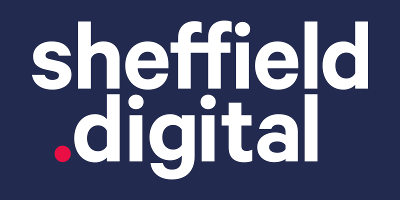Presentation 1 - Strengths and weaknesses of different programming languages
With the ever-growing amounts of data we need to deal with, we are experiencing a growing demand for intelligent insights and data-driven strategies. We are also seeing more companies wanting to establish or further advance their data and data science functions.
But what is the right skillset for your data science team? If you need to get into hands-on coding, what languages should you learn? Or, if you are already and experienced programmer, do you need to add any more tools to your portfolio of skills? And even if you already have quite a few tricks (languages) up your sleeve, how do you decide what the best language is for the job at hand?
In this talk we will provide an overview of the top programming languages for Data Science, with their advantages and limitations.
Dr Jasmina Lazić leads, facilitates and enables the commercial adoption of state-of-the-art data science and technology developed at the University of Edinburgh, fostering new collaborative partnerships and technical engagements between the University and industry. Before joining the University of Edinburgh, Jasmina held a number of consultancy and advisory roles in the technology sector, designing, implementing and delivering technical solutions for commercial clients including blue-chip companies. She is also an advocate for high-quality mathematics education and women in technology.
Presentation 2 - Brain Computer Interface - An Introduction
Description
Brain computer interface (BCI) technology is a growing field of research with many current and potential applications. It may also be referred as BMI (Brain Machine Interface) in some literatures. BCI is applicable in medicine, education, monitoring and control systems, entertainment and many more fields. Typical BCI system consists of sensor devices capturing brain signals. Machine learning algorithms are used to associate the captured signals into cognitive state which can then be translated into computer commands. However, this technology is not flawless. There are challenges such as noise to signal ratio, physical and psychological differences of individuals and ethical matters. This talks will provide an introduction to modern BCI technologies with the following agenda.
What is Brain Computer Interface (BCI)?
How does it works?
Where can it be used?
What are the limitations?
Ethics
Prerequisites for Audience: basic understanding of machine learning concepts such as supervised/unsupervised learning would help but it will be covered briefly.
No prior knowledge of neuroscience is required.
Presenter - Tyn Ong worked as a software developer, system analyst and IT environment manager in Utility and Financial industries for over a decade. He took a career break and recently graduated with MSc in Brain Science from University of Glasgow. He is incubating a startup in BCI while looking for PhD studentship opportunities.
Agenda:
6:30 PM – 7:00 PM: Networking
7:00 PM – 7:30 PM: Dr Jasmina Lazić - Chief Data Technologist, Bayes Centre
7.30 – 7.45 PM: Q & A Session
7:45 PM – 8:15 PM: Tyn Ong
8:15 PM – 8:30 PM: Q & A Session
8.30 PM - 9.00 PM: Networking and Drinks
www.linkedin.com
www.linkedin.com
More details and tickets: www.meetup.com
Imported From: www.meetup.com
This is a group for anyone interested in Data Science, Big Data, Analytics and Technology trends. We started this group to build a community to discuss general insights into the market and share personal experiences of working and operating in this area. We hope to cover skills shortages, technological advancements and organisational implications in Data Science and Technology during our series of meetups. All skill levels are welcome.


